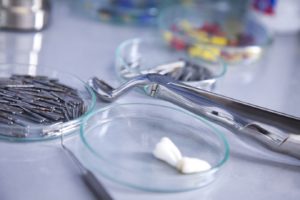 A dental crown is a cover for a damaged natural tooth that serves to strengthen the tooth and improve the appearance of a tooth that’s badly discolored, chipped, cracked, or misshapen. Traditional crowns are made from impressions of patients’ teeth in dental laboratories away from dentists’ offices.
A dental crown is a cover for a damaged natural tooth that serves to strengthen the tooth and improve the appearance of a tooth that’s badly discolored, chipped, cracked, or misshapen. Traditional crowns are made from impressions of patients’ teeth in dental laboratories away from dentists’ offices.
CEREC crowns are made from machines some dentists have in their offices. The name CEREC is an acronym for Chairside Economical Restoration of Esthetic Ceramics. It can also stand for ceramic reconstruction.
Procedure
If you have a tooth that needs a crown, the procedure is similar whether you choose a traditional or CEREC crown, but there are some notable differences, especially when it comes to the time it takes for each procedure.
Traditional Crowns
If you opt for a traditional crown, your dentist will complete any dental work the tooth needs first, such as a filling. Once the tooth is ready, your dentist will prepare it for the crown by removing some of the outer portion of the tooth so the crown will fit over it perfectly.
Once the tooth is fully prepared, your dentist will make a mold of your tooth to send to a dental lab to create the crown. This is often where the first appointment ends for the patient because dentists can’t manufacture traditional crowns in their offices.
Before leaving the first appointment, some patients get a temporary crown to protect the tooth until the custom crown comes in. This protects the vulnerable tooth in between appointments, but it does add extra cost to the procedure.
Most dental labs finish crowns in one to two weeks. Your dentist will call you back into the office to place the permanent crown once they receive it from the lab.
CEREC Crowns
CEREC crowns are often called same-day crowns because one of the biggest advantages of CEREC technology is that it allows dental offices to make their own crowns so the patient can leave the initial appointment with their new crown.
If you decide to get a CEREC crown, your dentist will prepare your tooth in the same way they would for a traditional crown. When your natural tooth is prepared for the crown, your dentist will use a special oral camera to get a digital impression of your tooth.
Your dentist will then upload the image to the CEREC machine where the software will create a virtual model of your tooth. The CEREC milling machine uses the model to manufacture your custom crown in your dentist’s office.
Your dentist can place your CEREC crown immediately after it’s made, which is the main reason many people prefer CEREC crowns — there’s no need to wait a week or two for a dental lab to make your crown and spend additional money on a second dental appointment.
Material and Durability
Traditional crowns are available in many different material choices, including ceramic, porcelain, composite resin, metal alloys, or porcelain fused to metal. Which material a dental lab chooses to use for a particular crown largely depends on the location in the mouth where the crown will go and how visible the tooth is.
Metals bond to teeth very well, so patients who have teeth that are fractured below the gum line often need a metal or a porcelain and metal combination crown to preserve the natural tooth and protect it from further breakage.
CEREC crowns are made from ceramic. While a CEREC crown isn’t quite as strong as a crown that contains metal, CEREC crowns do have an excellent success rate, with over 95 percent of patients reporting satisfaction nine years after getting a CEREC crown (according to Sirona).
Dr. Jerry F. Maymi & Associates serves clients of all ages with their general and cosmetic dentistry needs throughout the South Jordan, Utah, area. If you have a damaged tooth in need of a crown, contact us today to schedule an appointment to discuss your options.
